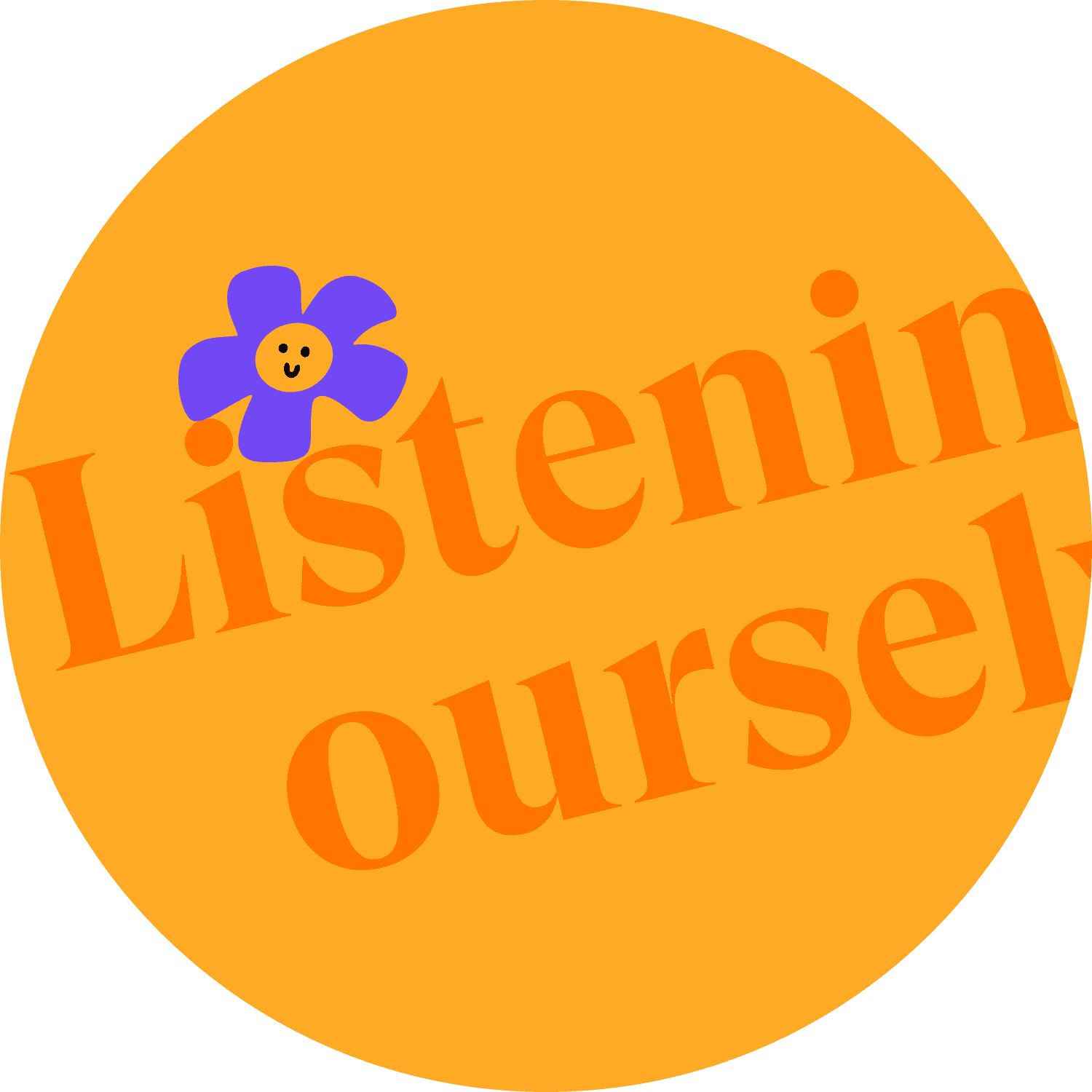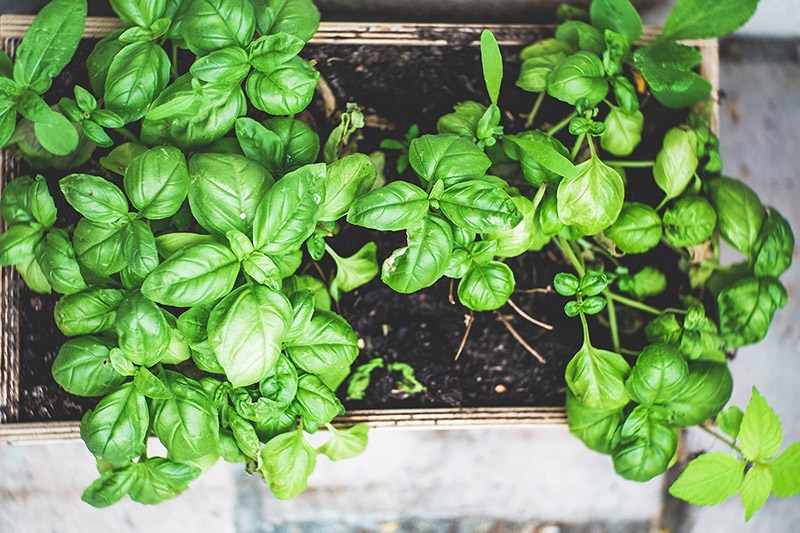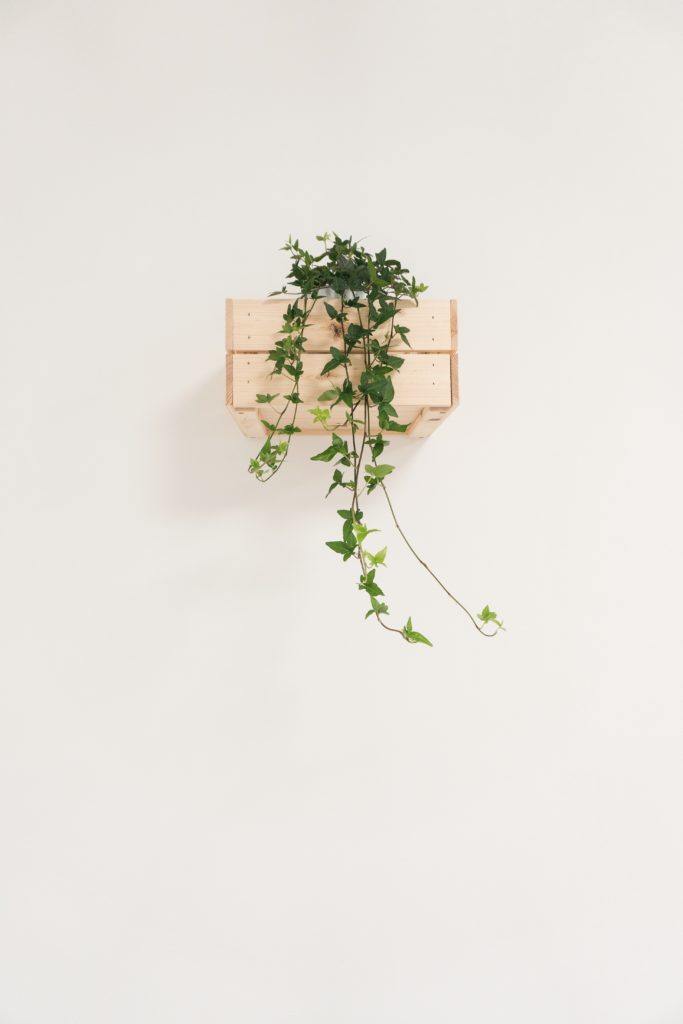
How to Start a Small Garden in Your Apartment
It may be your dream to live on a smallholding in the countryside, with an acre of land. But if, like so many people, you currently live in a small urban apartment, that dream might feel very far away. The truth is that most of the world’s population lives in cities, and the number of city dwellers continues to grow. We can’t all be farmers. But that doesn’t mean that we can’t grow any of our own food; anyone can start a small ‘garden’ in their apartment. In fact, it’s something that everyone should do.
If you want to live more sustainably, growing at least some of your own food is a wonderful place to start. It’s a great idea to look out for allotments and community garden schemes in your area, giving access to some food-producing land. And even without such opportunities, you could contact the council or local landowners and start your own scheme. Perhaps you and your neighbours could even club together and create a garden in a common area, or on the roof? In France, the law actually decrees that all new rooftops must be covered either with solar panels or with plants.
Even when these options are not possible, you can still start a small garden in your apartment, where you can begin to take back some control over what you eat.
Why Start a Small Indoor Garden?
Even a small indoor garden can be great for both people and planet; you might be amazed by how much difference even a very small garden can make. Benefits include:
- Reducing the amount of food you buy from damaging mono-crop agriculture.
- Lowering food miles and reducing your carbon footprint.
- Lessening the amount of plastic packaging brought into your home.
- Opportunities to reuse plastic, keeping it from the wider environment and prolonging its usefulness.
- Recycling food waste by composting at home, keeping it from landfill.
And, of course, producing some food in your own home can also save you money.
Choosing Where to Grow Plants in Your Apartment
There are several important considerations when choosing where to grow your plants.
👉 Think about:
- Where and for how long the location in your apartment gets full sun.
- The proximity to artificial heat-sources, and when these are on.
- The average temperatures in the space throughout the year (and how dramatically these fluctuate).
- Ventilation: is the spot very stuffy, or can you create a good breeze
- Accessibility: how easy it will be to reach and maintain your plants.
A light, bright location is best, though many plants prefer not to be in direct sunlight all day long. Try to choose a spot that isn’t too close to a heat source like a stove, radiator, or oven, or where temperatures will rise and fall suddenly and dramatically. A little natural ventilation is ideal (ie, where windows can be opened to create a through-breeze). Finally, consider practicality; you need to be able to get to your plants easily to tend and water them, and their containers shouldn’t impede other activities within your home.
Maximising the Number of Plants You Can Grow Indoors
👉 When considering how much to grow and where to grow it, it is also important to think about options for maximising growing-space, and which growing systems to use. Often, even in a very small apartment, you can grow a surprising amount of food by considering the following approaches:
Windowsill Gardens
This is the simplest, most traditional way to grow food indoors. Window boxes or other small containers can be placed on inside sills, and (depending on regulations where you live) window boxes can potentially be affixed on the outside of your windows, too.

A south-facing windowsill will offer the best light levels and conditions, but you can grow some plants at a window facing any direction. North-facing windows will get less light, but there are a number of shade-tolerant plants that will still grow.
Placing containers on the existing sill is the easiest way to get started, but you could also dramatically increase your growing area by affixing shelves across a window, or with a narrow shelving unit placed on the windowsill to hold more plants.
Vertical Gardens
Inside or out, this approach is all about thinking vertically to make the most of the space. You might not think you have any space for container plants, but have you considered the vertical space: up walls, and above other interior features?
Shelving is the simplest form of vertical gardening, and doesn’t even require DIY. Whether placed in a window or against a sunny wall in your room, you can use any old shelving to increase the amount of container plants in your space.
But shelving isn’t the only option; other vertical gardening solutions include:

- Growing plants in pockets (for example, in a fabric shoe-organiser hung on a wall or even a door).
- Creating a tower or vertical structure into which plants can be placed. (For example, a planting tower made from old plastic drinks bottles.)
- A structure in which to grow your plants made from, for example, old plastic plumbing pipes or guttering.
- Climbing plants grown up trellis or supports against a sunny wall, from containers at the base.
These are only a few innovative ways to make use of the vertical space in a room when horizontal space is limited.
Hanging Gardens
Another way to take advantage of the whole room is to utilise ceiling space. Hanging baskets may drip, but plenty of other leak-free containers could be hung inside to grow medium-sized plants securely. Some indoor gardeners simply hang one or two containers on wall or ceiling hooks, while others have even strung multiple containers like bunting along wire or string.
Larger Containers in a Sunny Spot
You may think that you are restricted to small containers inside your apartment. But with a well thought out layout, you may be able to place much larger containers in a sunny spot. By using something like an old 55 gallon barrel, you could create a larger planting area for crops like potatoes that typically need a large area. Holes cut in the container’s sides, lined with sacking or similar, can even be used to grow an additional crop like herbs or strawberries.

What Can You Grow Indoors?
You might be surprised by the sheer variety of plants that can be grown in suitable spots within your apartment; you’ll only be limited by:
- How much space is available. (Is it just a windowsill, a sunny wall, or an entire spare room, for example?)
- How much time you have to tend your garden. (An indoor garden will be a little more high maintenance than one outside, as crops will all require hand-watering. Certain crops may even need to be hand-pollinated.)
With a little effort and ingenuity, almost any outdoor plants can be grown inside – from certain dwarf fruit trees, to micro-greens and salad crops. However, if you are new to gardening, certain options will be easier than others – for example, the following can be grown in even the smallest of indoors gardens:
- Cut-and-come-again loose-leaf lettuces.
- Brassicas for micro greens
- Cress
- Pea shoots 🌱
- Spinach and chard
- Asian greens like pak choi, mizuna, and mibuna
- Radishes
- Spring onions
- Strawberries
- Herbs like basil, mint, rosemary, and thyme.
Once you get the hang of indoors gardening, you could progress to growing:
- Tomatoes 🍅
- Peppers (bell peppers and chillies) 🌶️
- Carrots, beetroots, and other root crops (in deeper window box containers) 🥕
- Peas, beans, and other plants that require supports 🌱
- Potatoes (in grow-sacks or larger indoor containers or barrels). 🥔
From there, you can branch out to grow a wide range of further produce.
Selecting Containers for a Small Garden Indoors
One of the great things about a small indoors garden is that you can get started cheaply. You do not need to buy containers for planting; instead, consider:
- Using toilet roll tubes or other waste materials (eggshells, newspaper, or other scrap paper folded into small pots) to start your seeds.
- Using clear plastic to create makeshift propagators. Clear plastic trays, tubs, or bags used for food packaging can be placed over seed trays or pots to give a little extra heat when germinating seeds.
- Using food packaging, like yoghurt pots and plastic trays, as plant pots and drip catchers.
- Using old plastic drinks bottles as containers.
- Re-using old kitchen equipment or other upcycled items as containers.
- Upcycling old items of furniture or wood pallets to make shelves or vertical garden structures.
- Sourcing old tools, containers, and growing items for free (or cheap) online.
Creating Compost to Fill Your Containers
While you may initially need to buy some compost (making sure to choose a peat-free option, so as not to deplete peat bog habitats), even in a small apartment, over time you can save money by making your own compost for free.
You can use a small receptacle to compost kitchen waste such as fruit and vegetable scraps, as well as cardboard, paper and other compostable waste. Such a receptacle can easily fit under your kitchen sink, or in another kitchen cabinet out of the way.
You could even speed up the composting process by creating a small compost tumbler, by employing worms in a small-scale vermiculture composter, or by using a bokashi bucket system. Even in a tiny studio apartment, these are all possibilities.
Using Water to Grow Plants Indoors (Small-Scale Hydroponics)
Whether or not you make your own compost, you could also consider growing plants without any soil or compost at all; growing plants in water is a potential small-scale solution for apartment-dwelling food producers. In a simple hydroponics system, plants are floated on rafts with their roots suspended in a container of water. Check out five gallon bucket hydroponics online to see how this can be achieved even in a small apartment. 💧
Harvesting Rainwater for an Apartment Garden
Even in an apartment, it is a good idea to consider whether you can harvest rainwater to water your small garden rather than using water from your tap. Tap water is not as good for plants as rainwater, having less nutriment, and of course it is more sustainable to make use of rainwater if you can.
If possible, discuss installing a rainwater harvesting system for your block, perhaps with your neighbours; you may be able to organise a rainwater harvesting tank on a roof or balcony. Even where this is not possible, a simple alternative is to hang a small bucket or other receptacle out of your window, or place one in a communal outdoor area and use the water collected for your plants.
These things may not be viable where you live, but if you can’t harvest rainwater, leave tap water out overnight before using it to water your plants.
Making Liquid Feeds for Container Plants
So, you’ve got your small apartment garden up and running. Your plants are growing nicely and your watering and compost-creating regimes are sorted. One other thing to consider is how to keep plants healthy in the long term.
Container-grown plants can quickly use up the nutrients in their soil, so will often do better if given a boost during the growing season. Sometimes, adding a little more compost around the top of their containers, or re-potting, will do the trick. But the easiest way to increase vitality is with liquid plant feeds.
The good news is that you can make these quickly and easily at home; options include:
- Making a compost liquid feed by simply diluting some of your home-made compost in water, or taking the run-off from a wormery.
- Make a liquid feed using green teas, or other ingredients (molasses, baking powder, Epsom salts, etc.)
- Harvesting local weeds (like nettles) to make a nitrogen rich liquid feed. The weeds are simply placed into a bucket, covered with water and left to stew for at least six weeks. The plant material rots down and can then be strained, watered down 1:3 (one part nettle brew to three parts water) and used to water your plants.
- Foraging for seaweed on a local beach, or organic matter from a local park (comfrey leaves, for example), to make a liquid feed rich in potassium and micro-nutrients.
Pollinating Indoor Plants by Hand
One final consideration is that an indoor garden will not be accessible by insects – leading to patchy pollination. While some plants are self-pollinating, those usually pollinated by bees and other insects, or by the wind, may require your agency. Where this is the case, simply use a small brush to transfer pollen from one flower to another. 🐝
Creating a small garden in your apartment has its challenges – but, over all, getting started is easier, cheaper, and less time consuming than many people imagine. So stop making excuses! Do your part for planet and people by growing at least some of your own food, no matter where you live.
Featured photo by Carolyn V on Unsplash
More on gardening: How and Why To Grow a Food Forest in Your Garden
More on micro-gardening: Sustainable Art Projects | Micro-Life Under One Sun
Earth.fm is a completely free streaming service of 1000+ nature sounds from around the world, offering natural soundscapes and guided meditations for people who wish to listen to nature, relax, and become more connected. Launched in 2022, Earth.fm is a non-profit and a 1% for the Planet Environmental Partner.
Check out our recordings of nature ambience from sound recordists and artists spanning the globe, our thematic playlists of immersive soundscapes and our Wind Is the Original Radio podcast.
You can join the Earth.fm family by signing up for our newsletter of weekly inspiration for your precious ears, or become a member to enjoy the extra Earth.fm features and goodies and support us on our mission.
Subscription fees contribute to growing our library of authentic nature sounds, research into topics like noise pollution and the connection between nature and mental wellbeing, as well as funding grants that support emerging nature sound recordists from underprivileged communities.
